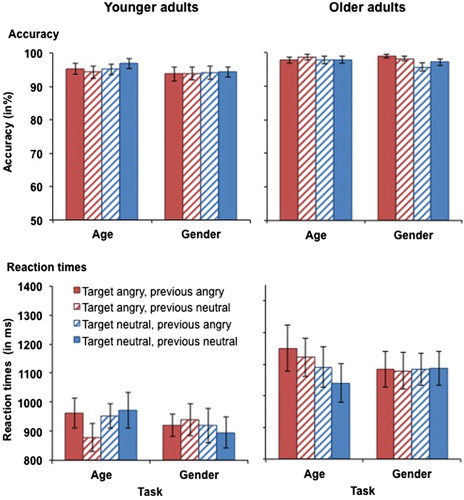Figures & data
Table 1. Participant characteristics.
Figure 1. Examples of trials with the instructions to respond to the emotion of the face if it is presented below the horizontal line (A) or to the age of the face if it is presented above the horizontal line (B) in Experiment 1. As faces were presented clockwise, the examples show a repeat trial in the emotion condition and a switch trial in the age condition.
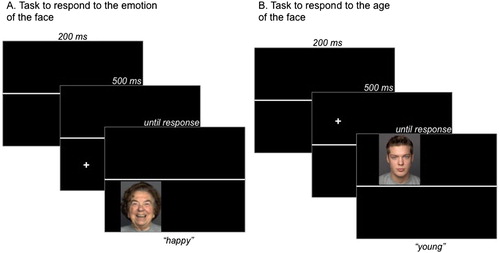
Figure 2. Accuracy (upper panels) and RTs for correct responses (lower panels) in younger (left-hand panels) and older adults (right-hand panels) as a function of target emotion and previous emotion in Experiment 1. Participants switched between the age task (with task-irrelevant emotion) and the emotion task (with task-relevant emotion). This figure shows data from the happy vs. neutral task block. Only switch trials are presented in this figure. Error bars represent SEM.
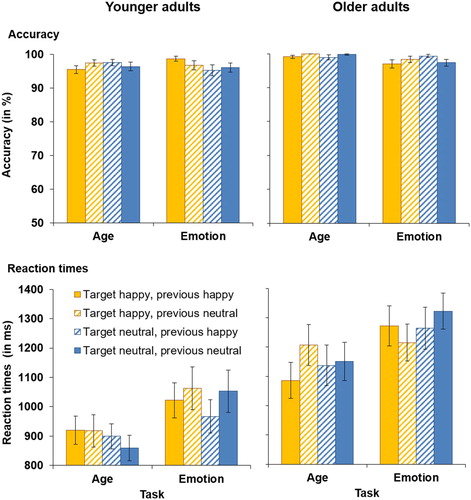
Figure 3. Accuracy (upper panel) and RTs for correct responses (lower panel) in younger (left-hand panel) and older adults (right-hand panel) as a function of target emotion and previous emotion in Experiment 1. Participants switched between the age task (with task-irrelevant emotion) and the emotion task (with task-relevant emotion). This figure shows data from the angry vs. neutral task block. Only switch trials are presented in this figure. Error bars represent SEM.
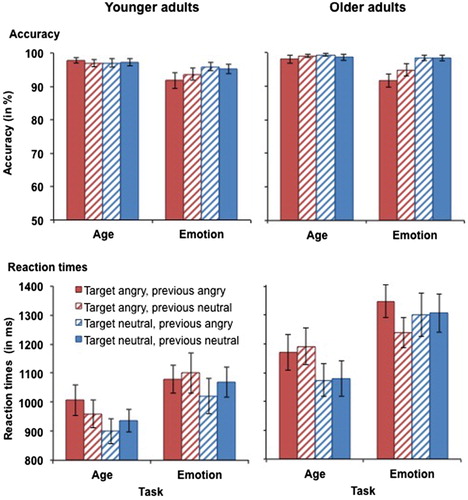
Figure 4. Accuracy (upper panel) and RTs for correct responses (lower panel) in younger (left-hand panel) and older adults (right-hand panel) as a function of target emotion and previous emotion in Experiment 2. Participants switched between the age and the gender tasks with block-wise irrelevant emotion. This figure shows data from the happy vs. neutral task block. Only switch trials are presented. Error bars represent SEM.
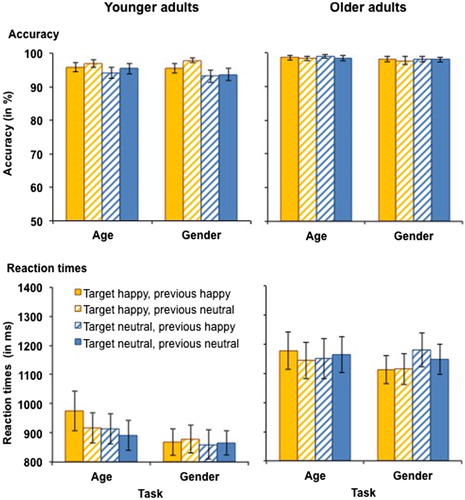
Figure 5. Accuracy (upper panel) and RTs for correct responses (lower panel) in younger (left-hand panel) and older adults (right-hand panel) as a function of target emotion and previous emotion in Experiment 2. Participants switched between the age and the gender tasks with block-wise irrelevant emotion. This figure shows data from the angry vs. neutral task block. Only switch trials are presented. Error bars represent SEM.
